Bringing The Best Of TradFi Into DeFi – Phuture Finance

This is an educational article and not financial advice.
This is a deep dive into how Phuture works & a guide to creating your index.
What is Phuture?
Phuture is a platform that simplifies crypto investing. Instead of worrying about which crypto to buy and which one to sell, Phuture offers managed portfolios through a single token.
Phuture enables anyone to invest in or create a crypto index.
What is an index?
An index mimics the composition of multiple assets into a single asset.
For example, instead of buying 2 axies, 5 mana, and 10 sand, you can simply buy 1 token which consists of these assets.
What Phuture offers?
One can access the diverse index products of Phuture to invest or become an index manager to launch their index.
For index managers, Phuture makes it easy to create their index strategy. Phuture has predefined sectors in which the index manager can curate a portfolio of assets.

Phuture operates as a Decentralized Autonomous Organization. DAO empowers each of the members to participate in the governance, discussions, vote of new ideas, and vote on existing proposals.
The native token PHTR is used to
- Enforce governance
- Reward users
- Incentivise activities
The Technical Innovations Which Make Phuture Disruptive.
1. Liquidity sources of Phuture
Phuture uses external liquidity.
It sources liquidity from the Ethereum network. It taps into the Most liquid exchange.
Currently, it sources from Uniswap V2 and Sushiswap.
This helps Phuture to separate the cost of execution from the size and depth of the index.
Phuture’s design ensures that the trading cost is the same whether minting an index with millions under management or an index with few thousand under management.
How phuture is different from Balancer designs?
A balancer pool cannot accept-sided deposits due to extreme slippage. The user has to deposit the constituent assets into the pool to ensure sufficient liquidity.
Liquidity bootstrapping works without any hassle for a limited number of indices. But it is unwise to assume that the investors for the index may own the underlying token.
Phuture removes the liquidity bootstrapping phase.
2. Architecture
Phuture can support infinite indices created on it.
But how does it achieve it?
Rebalancing each index is not a viable option. It requires a lot of additional operations.
So what phuture does to solve this is to group the indices into homogeneous pools of assets. Instead of solving locally, Phuture solves it at a higher level.
Each of the indices is assigned a weight based on the asset’s weight in the index.
When the rebalancing happens between two asset pools, all the indexes holding either of the assets are balanced.
Phuture utilises the assets to generate additional yield instead of sitting idle.
The assets are stored in Vaults. Phuture maintains a reserve level in the vault to support rebalancing and redemption. Rest is utilised to generate yield.
However, there is a challenge.
Smaller indices would not benefit from yield optimisation as their asset needs to be kept in the vault for rebalancing and redemption.
Phuture solves this by maintaining one reserve for each asset pool on the platform.
The yield is shared pro-rata across the indices making up that asset pool.
3. Smart rebalancing
Phuture is designed to prevent rebalancing when the asset’s weight sits outside of an acceptable range. This is done by rebalancing bands.
It prevents excessive rebalancing for each small price movement as well as provides safety when the price move drastically.
Phuture uses oracles for the pricing data. Oracles aggregate the data from multiple sources and are robust against manipulation.
To prevent rebalancing of assets that do not share common indices, phuture has a rebalancing surface. It maps the relationship between every asset in the Phuture and utilises the relationship to prevent leakage of value from one asset to the other.
So How To Get Started?
1. Invest in an index created by someone else.
Currently Phuture.finance demo is live at https://demo.phuture.finance/indices. The existing indices are shown on the homepage.
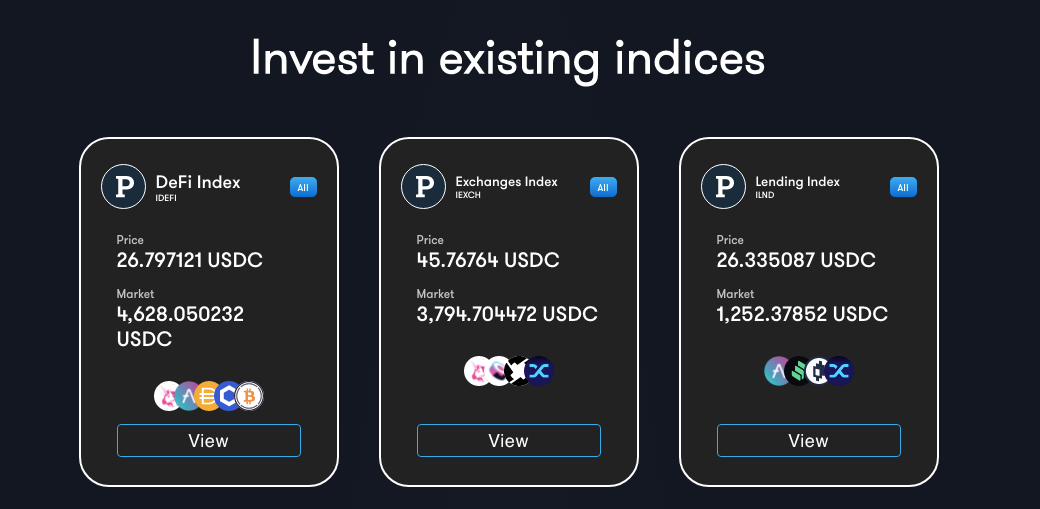
On Clicking the View button in the 1st index (DeFi Index), the detail stats are shown.
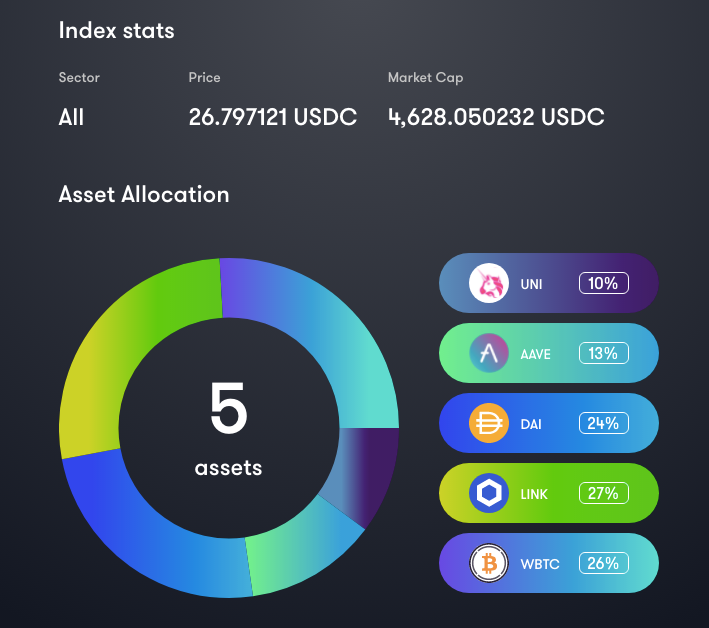
2. Now lets see how you can create your index.
In case you want to be the index manager and create your index. Click on the create index button.

You may choose to create a sector-specific index. Suppose you want to create an index of lending projects then select the Lending Block. Please note that all the options are not enabled in the demo version.
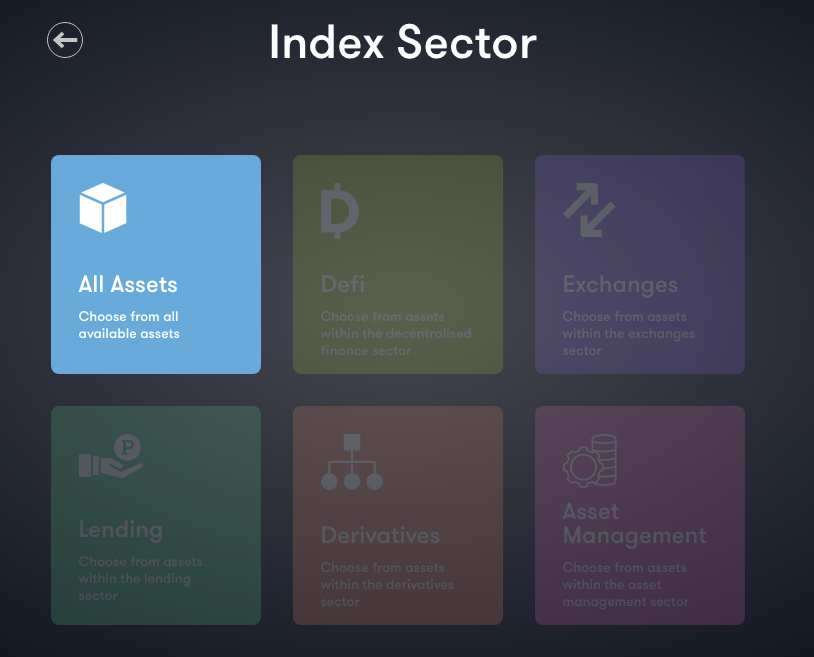
Now, select the weighting method. On the demo version, the fixed weighting method is available. Once the product is fully launched more options will be enabled.
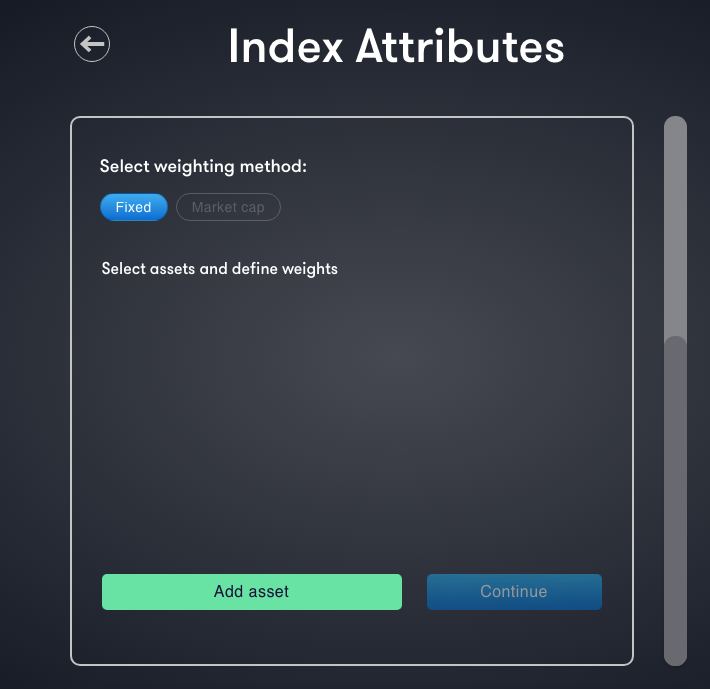
Click Add Assets button, you will be shown all the assets available.
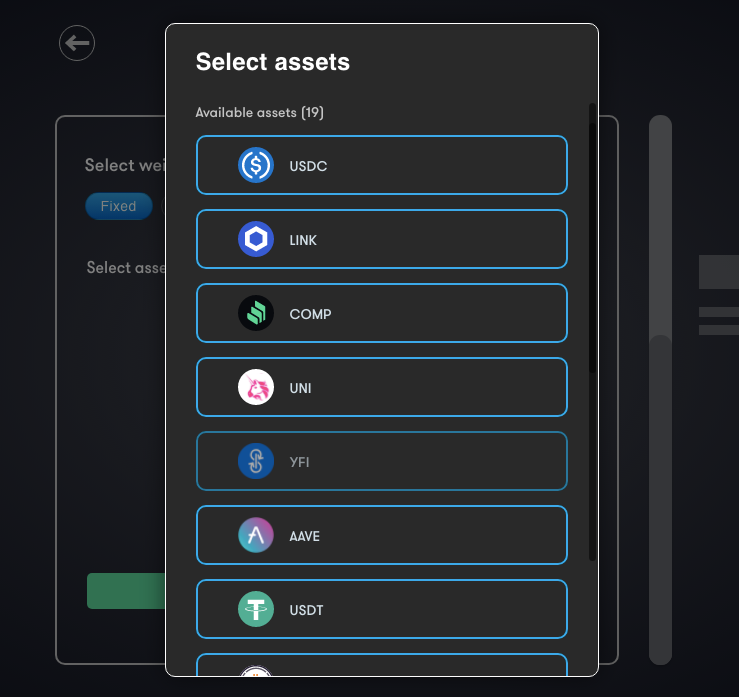
Now I want to create a token having Uniswap, Sushiswap and Compund.
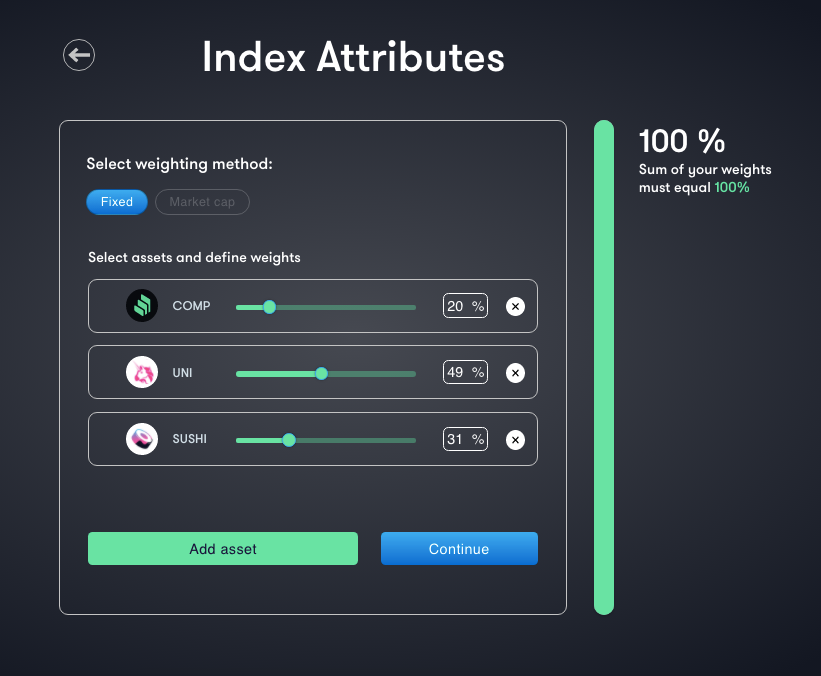
Once the sum of the weights is 100, we can create the index by paying with USDC.
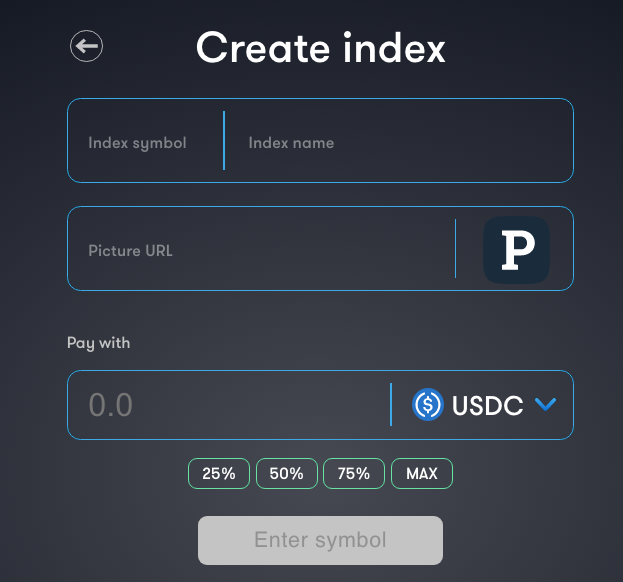
There you go. All set to make your life easy by investing in an existing index or by making the life of others easy by creating your index.
Investment for Web3 Environment
Phuture is bringing the best of traditional finance into decentralized finance. And along with that, they are improving its manifolds.
- Along with buidling a great product, they also have a great community on discord. Link.
- You can also follow them on Twitter at @Phuturedao for regular updates
- For an in-depth technical guide, do check their gitbook at docs.phuture.finance












